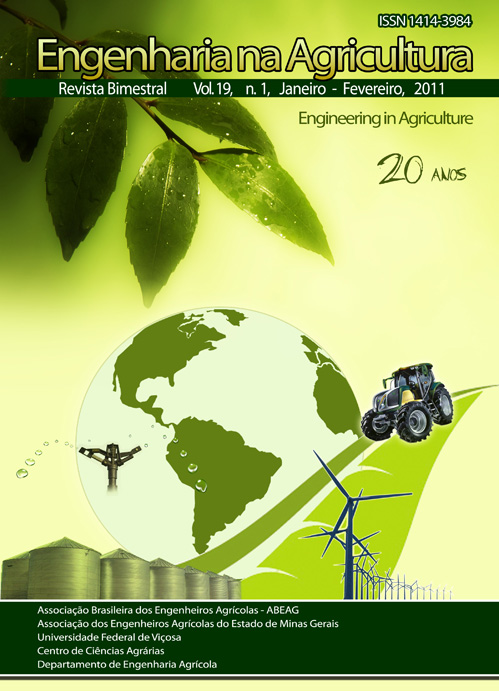PERFORMANCE OF THE ANAEROBIC FILTERS IN THE TREATMENT OF WASTEWATER FROM THE WASHING AND PULPING/HUSKING THE CHERRIES OF THE COFFEE SHRUB
DOI:
https://doi.org/10.13083/reveng.v19i1.277Keywords:
reator anaeróbio, filtro anaeróbio, compostos fenólicos, café.Abstract
Three anaerobic filters with upflow were operationally evaluated for the treatment of wastewater from the coffee cherries processing (ARC). The reactors were made with PVC tube with total volume for 139.5 L. They were operated under environmental temperature varying from 13.8 to 24.4 ºC. The ARC had the pH corrected with whitewash to values up to 7 and the concentration of nutrients to relationship DBO/N/P equal 100/5/1. The volumetric organic load rate and hydraulic retention time varied from 1.49 to 12.99 kg m-3 d-1 and 32.3 to 56.9 h, respectively. The filters were monitored, by collecting both the affluent and effluent samples of the filters, and quantifying the variables: COD, BOD, phenolic compounds, pH, alkalinity and volatile acids. At the end of the evaluated conditions it observed that the great oscillation in the hydraulic and organic load did with that the anaerobic filters used in this work operated in an unstable condition, presenting unbalance between the producers and consumers of volatile acids, with production no satisfactory of alkalinity bicarbonate. However, the affluent and effluent pH values were inside of the range of appropriate values so that it has the anaerobic degradation of the organic material. The filters didn’t support the organic shock load rate, what reduced the efficiency of removal of organic matter drastically and phenolic compounds. Based on the results of performance and conditions operational, it is conclude that the maximum organic load rate to be applied in anaerobic filters for treatment of ARC, it should not exceed 2 kg m-3 d-1 of DQO.Downloads
Downloads
Published
How to Cite
Issue
Section
License
Authors who publish with this journal agree to the following terms:
The author(s) authorize(s) the publication of the text in the journal;
The author(s) ensure(s) that the contribution is original and unpublished and that it is not in the process of evaluation by another journal;
The journal is not responsible for the views, ideas and concepts presented in articles, and these are the sole responsibility of the author(s);
The publishers reserve the right to make textual adjustments and adapt texts to meet with publication standards.
From submission, the author is fully conceding the paper's patrimonial rights to the publication, but retaining the owner of its moral rights (authorship and paper's identification) according to Creative Commons Attribution-Noncommercial.








 Licensed by
Licensed by 